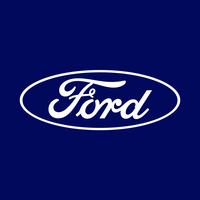The Tariff Tango: Japan and the U.S. Auto Industry's Dance of Misunderstanding
April 9, 2025, 9:38 am
Volkswagen
Location: Germany, Lower Saxony, Wolfsburg

Location: United States, Michigan, Ypsilanti
Employees: 10001+
Founded date: 1896
Total raised: $40K
In the world of trade, misunderstandings can create a rift as wide as the Pacific Ocean. The recent discussions between Japan and the United States over tariffs on automobiles illustrate this perfectly. Japan’s Prime Minister Shigeru Ishiba is stepping into the ring, trying to negotiate a deal with U.S. President Donald Trump. But the dance is complicated, and the music is discordant.
At the heart of this issue lies a persistent myth: that Japan's tariffs on American cars are stifling U.S. automakers. The reality is far less dramatic. Japan has not imposed tariffs on car imports since 1978. In contrast, the U.S. maintains a 2.5% tariff on Japanese vehicles. This discrepancy raises eyebrows. Why do American manufacturers struggle to sell in Japan? The answer is as simple as it is stark: the cars don’t resonate with Japanese consumers.
American automakers like GM and Ford have long faced an uphill battle in Japan. In the last fiscal year, GM sold around 1,000 vehicles, while Ford barely cracked 200. The numbers tell a story of disconnection. Japanese drivers crave compact, fuel-efficient cars that blend safety, reliability, and value. American giants, however, often deliver vehicles that are too large and cumbersome for Japan's narrow streets and tight parking spaces. The Ford F-150, a symbol of American automotive prowess, is a prime example. Its size makes it impractical in Japan, where space is at a premium.
The narrative of unfair trade practices is a mirage. It distracts from the real issue: American manufacturers have not adapted to local tastes. Japanese consumers are discerning. They want vehicles that fit their lifestyle, and they are not shy about seeking alternatives. While American cars struggle, foreign brands, particularly from Europe, thrive. Mercedes-Benz, BMW, and Volkswagen have carved out significant market shares. They offer luxury and performance that resonate with Japanese buyers.
In contrast, American cars carry an image problem. They are often perceived as inferior. This reputation is not insurmountable, but it requires effort and commitment from U.S. automakers. Tesla stands out as a beacon of hope. Its electric vehicles are gaining traction in affluent neighborhoods, but it remains an exception rather than the rule.
The misconception extends beyond automobiles. It seeps into other markets, like electronics. Once, it was believed that Japanese consumers preferred domestically produced TVs. Yet, today, over half of the TVs sold in Japan are made by Chinese companies. Brands like Hisense and TCL have won over consumers with their value propositions. Sony, once a titan, now struggles to maintain relevance.
The mobile phone market tells a similar story. Vodafone's attempts to penetrate the Japanese market in the early 2000s were met with confusion. The company failed to grasp local preferences, leading to its eventual exit. Meanwhile, Apple swooped in, capturing a staggering 50% of the market with its iPhone. The lesson is clear: understanding local tastes is crucial.
The narrative of closed markets is often oversimplified. It ignores the complexity of consumer preferences. Japanese shoppers are not averse to foreign products. They simply demand that these products meet their high standards. Companies like Disney and McDonald's have successfully navigated this landscape by adapting their offerings to local tastes.
As Ishiba prepares to engage with Trump, he faces a daunting task. Can he convince the U.S. president that the issue is not tariffs but rather the quality and appeal of American cars? The challenge is not just about numbers; it’s about perception and understanding.
The auto industry is at a crossroads. As technology evolves, so do consumer expectations. Nexteer Automotive, for instance, is pushing the envelope with its High-Output Column-Assist Electric Power Steering (HO CEPS). This innovation allows for greater flexibility and performance across various vehicle segments. It’s a reminder that adaptability is key in a rapidly changing market.
The automotive landscape is shifting. Electric vehicles are gaining ground, and manufacturers must keep pace. Nexteer’s advancements in steering technology highlight the need for innovation. Automakers must balance performance, cost, and development speed to thrive in this competitive environment.
In conclusion, the tariff debate between Japan and the U.S. is a complex dance of misunderstandings. The myth of unfair trade practices obscures the real issues at play. American automakers must adapt to local tastes and preferences if they hope to succeed in Japan. As the world watches, the outcome of this negotiation could reshape the future of the auto industry. The question remains: will both sides find common ground, or will they continue to stumble in this intricate tango?
At the heart of this issue lies a persistent myth: that Japan's tariffs on American cars are stifling U.S. automakers. The reality is far less dramatic. Japan has not imposed tariffs on car imports since 1978. In contrast, the U.S. maintains a 2.5% tariff on Japanese vehicles. This discrepancy raises eyebrows. Why do American manufacturers struggle to sell in Japan? The answer is as simple as it is stark: the cars don’t resonate with Japanese consumers.
American automakers like GM and Ford have long faced an uphill battle in Japan. In the last fiscal year, GM sold around 1,000 vehicles, while Ford barely cracked 200. The numbers tell a story of disconnection. Japanese drivers crave compact, fuel-efficient cars that blend safety, reliability, and value. American giants, however, often deliver vehicles that are too large and cumbersome for Japan's narrow streets and tight parking spaces. The Ford F-150, a symbol of American automotive prowess, is a prime example. Its size makes it impractical in Japan, where space is at a premium.
The narrative of unfair trade practices is a mirage. It distracts from the real issue: American manufacturers have not adapted to local tastes. Japanese consumers are discerning. They want vehicles that fit their lifestyle, and they are not shy about seeking alternatives. While American cars struggle, foreign brands, particularly from Europe, thrive. Mercedes-Benz, BMW, and Volkswagen have carved out significant market shares. They offer luxury and performance that resonate with Japanese buyers.
In contrast, American cars carry an image problem. They are often perceived as inferior. This reputation is not insurmountable, but it requires effort and commitment from U.S. automakers. Tesla stands out as a beacon of hope. Its electric vehicles are gaining traction in affluent neighborhoods, but it remains an exception rather than the rule.
The misconception extends beyond automobiles. It seeps into other markets, like electronics. Once, it was believed that Japanese consumers preferred domestically produced TVs. Yet, today, over half of the TVs sold in Japan are made by Chinese companies. Brands like Hisense and TCL have won over consumers with their value propositions. Sony, once a titan, now struggles to maintain relevance.
The mobile phone market tells a similar story. Vodafone's attempts to penetrate the Japanese market in the early 2000s were met with confusion. The company failed to grasp local preferences, leading to its eventual exit. Meanwhile, Apple swooped in, capturing a staggering 50% of the market with its iPhone. The lesson is clear: understanding local tastes is crucial.
The narrative of closed markets is often oversimplified. It ignores the complexity of consumer preferences. Japanese shoppers are not averse to foreign products. They simply demand that these products meet their high standards. Companies like Disney and McDonald's have successfully navigated this landscape by adapting their offerings to local tastes.
As Ishiba prepares to engage with Trump, he faces a daunting task. Can he convince the U.S. president that the issue is not tariffs but rather the quality and appeal of American cars? The challenge is not just about numbers; it’s about perception and understanding.
The auto industry is at a crossroads. As technology evolves, so do consumer expectations. Nexteer Automotive, for instance, is pushing the envelope with its High-Output Column-Assist Electric Power Steering (HO CEPS). This innovation allows for greater flexibility and performance across various vehicle segments. It’s a reminder that adaptability is key in a rapidly changing market.
The automotive landscape is shifting. Electric vehicles are gaining ground, and manufacturers must keep pace. Nexteer’s advancements in steering technology highlight the need for innovation. Automakers must balance performance, cost, and development speed to thrive in this competitive environment.
In conclusion, the tariff debate between Japan and the U.S. is a complex dance of misunderstandings. The myth of unfair trade practices obscures the real issues at play. American automakers must adapt to local tastes and preferences if they hope to succeed in Japan. As the world watches, the outcome of this negotiation could reshape the future of the auto industry. The question remains: will both sides find common ground, or will they continue to stumble in this intricate tango?

